Socks are everywhere, but how often do you really think about them? Perhaps you are part of the growing population of sock lovers who has a different “flavor” sock for every occasion, but chances are you just slip on a pair in the morning and go about your day.
Yet there is a lot more to socks than meets the eye! Consider compression socks, which may become your new best friend! They aren’t just a trend. Studies have shown they can help certain populations, including pregnant women and seniors, find pain relief. Even athletes have reported improved performance when they wear compression socks.
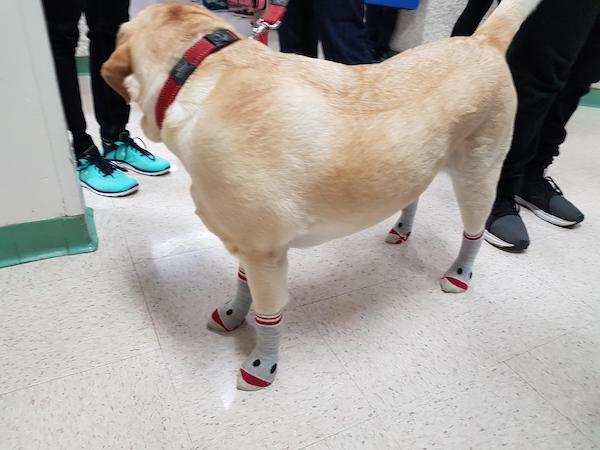
Sound appealing? Here’s what you need to know and why you should consider adding a few pairs of compression socks to your wardrobe.
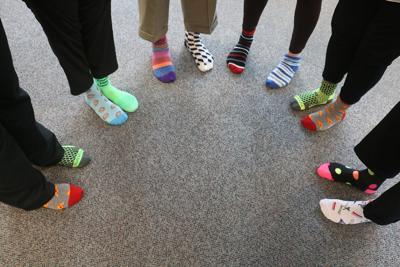
What Are Compression Socks?
Whether you’re a runner, a pilot, a nurse, or a senior citizen, there are therapeutic socks out there for you. These washable socks work for pain relief by simply reducing the diameter of certain veins, which increases your circulation.

If the blood in your legs isn’t flowing correctly, it can lead to some serious problems, including leg swelling, muscle cramps, tingling, numbness, and other associated pains. It can also cause varicose veins, which can lead to blood clots. Make sure you see a doctor if you have a family history of any of these conditions.
So how do compression these address these problems? Most people first change their shoes when they encounter circulation problems. While, a properly fitting pair of kicks is critical to muscle, spinal and overall health, many patients need to do more than change their shoes.
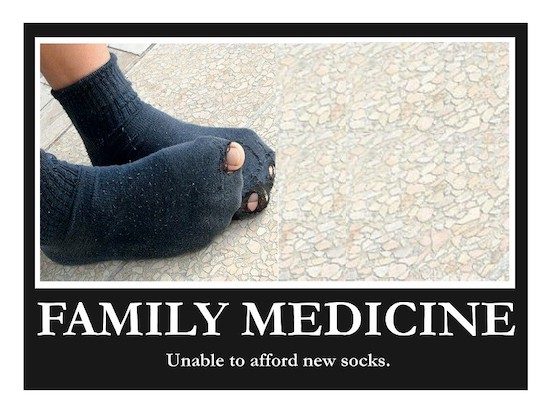
How They Work
Obviously, your legs and your feet are the lowest parts of your body. While your heart works hard to circulate your blood, some conditions – as well as simple gravity – can cause the heart to work extra hard to draw the blood back from your lower extremities. This can cause your blood to pool in your legs, which is incredibly uncomfortable and can cause fat pad-like swelling from increased friction, edema, numbness, and muscle pain. Therapeutic socks can also help with the pain associated with Peripheral neuropathy.
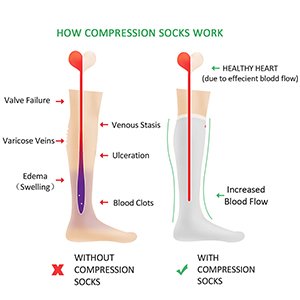
Therapy socks help your blood defy gravity and prevents calluses from occurring. Typically, these are tighter at the toe, and they get looser as they go up the leg. This allows your circulation to continue flowing in a healthy and normal way.
You and your doctor should work together to decide which level of compression you will need. This will vary depending on your physical needs, activity level, and lifestyle. You will also work with your doctor to figure out which style of sock will be most effective for treating your conditions.
Who Can Wear?
These are not a simple fad. They’re a medical necessity! Any customer, whether young adults, Senior citizens, post-surgery patients, pregnant women, and many others have been wearing them for decades. Rest assured, however, that today’s compression socks aren’t your grandma’s socks made out of cotton and fibers. There are hundreds of styles of compression socks, including fashionable, cute, and professional. The type you choose is up to you. If you are looking for socks for work, consider Chevrons. You can also never go wrong with classic black.
So who is wearing these? Certainly seniors will benefit from a good pair, as will post-surgery patients and pregnant women. Really, however, all can improve their health by wearing compression socks. Athletes swear by compression socks. Nurses and line workers who are on their toes all day often wear compression gear as part of their uniform. Many pilots and flight attendants love them, too. These will also help with unsightly varicose veins!
It’s worth repeating that you should always check with your doctor before you start wear compression socks. He or she can recommend the right socks for your unique needs.
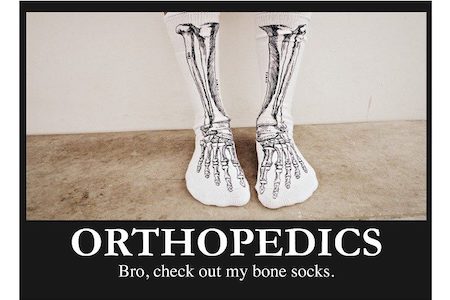
Socks for Peripheral Neuropathy
Peripheral neuropathy is a complicated word for a simple disorder: nerve damage. When the nerves outside your spinal cord and brain suffer damage, numbness and tingling can follow. Fortunately, compression socks can also help with the pain associated with Peripheral neuropathy. Ask your doctor if this treatment will work for you.
Peripheral Neuropathy is best treated with both compression socks and therapeutic shoes. A podiatrist will be able to help you find the support you need.
Plantar Fasciitis
Plantar Fasciitis is an incredibly painful condition that affects at least two million people in the United States alone. When pressure is placed on your fascia ligament (that ligament that runs along the bottom of your foot) you’ll experience soreness and debilitating sharp pain.
If you decide to wear compression socks for your plantar fasciitis, you will likely notice pain relief within a few weeks. Again, make sure you are wearing therapeutic shoes for the best results.
Shin Splints

If you’re an athlete, we have good news: compression socks have also been proven to help prevent shin splints. This condition is caused by inflammation in the muscles and tendons near the shin bones.
Compression gear can reduce the discomfort of friction and pain associated with shin splints by promoting blood flow and preventing swelling and stiffness.
Wearing these therapy crew socks can help you get back on your feet and toes and running again in no time.
Sitting for Long Stretches

Compression stockings are not just useful to those with medical conditions. The returns in terms of benefits are satisfactory. They are also used by people who are recovering from surgery and by those who sit or lay down for long stretches of time.
When you do not walk for a long period of time and seeks immediate medical attention, your blood circulation can be affected. If you are immobilized because of surgery, compression socks are used to keep the blood from pooling in your legs. These prevent calluses from occurring as well.

Many occupations require people to say in one position for a long period of time. Truck drivers, pilots, flight attendants, and others can benefit from these socks and the improved circulation.
Pregnant women often wear compression socks to help with their circulation—whether they are sitting or not.

Pregnancy can have a huge impact on a woman’s body and its functions. For many women, this can mean months of leg pain and swelling. Wearing compression socks can provide relief and reduce the chances of varicose vein development as well as pain associated with plantar fasciitis.
Different Levels
Note that the sock compression level is different from sock size. Compression levels determine how much pressure is put on your body. The pressure level you will use depends on your reason for wearing compression socks.
In general, compression levels range from 8 mmHg to 40 mmHg. Higher levels of compression are only available with a prescription, and it is best to talk to your healthcare professional if you are not sure which level is right for you.
Typical Compression Levels
The three most common types of compression socks are:
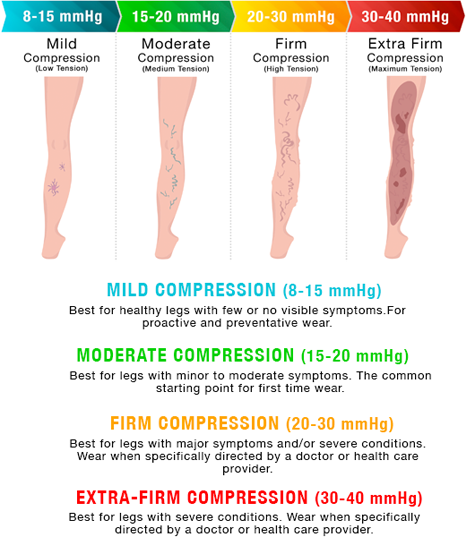
- 8-15 mmHG compression level of therapy
- 15-20 mmHG compression level of therapy
- 20-30 mmHG compression level of therapy
- 30-40 mmHG compression level of therapy
You may have to experiment with compression levels. The most popular level of compression is 20-30 mmHg. Socks in this range can help reduce the chances of developing varicose veins, edema during pregnancy, and other conditions.
Socks that are a blend of 65% nylon and 35% Spandex are usually a good bet because they will be comfortable and smooth against your skin. Generally speaking, these fabrics are washable, safe even for those with sensitive skin.
Finding the Right Pair
If you think that you might need compression socks everyday, you may be wondering how to find the right pair. Read on customer reviews to learn more on how to pick your perfect compression sock!
Step 1: Determine the Compression Level of Therapeutic Sock
If you need socks for daily wear, surgery recovery, sports performance or mild symptom management, then the 20-30 mmHg is a good option. This level of compression is also ideal for treating varicose veins and swelling in the legs and ankle. These socks can also be used to prevent many conditions.
Step 2: Choose the Height
Compression socks come in various sizes and heights, including knee-high, thigh-high, and full-leg. The sock you choose will depend on the location of your swelling. If you only have problems in your feet; such as toes and ankle, then a knee-high sock should suit you just fine.
Step 3: Choose Your Style
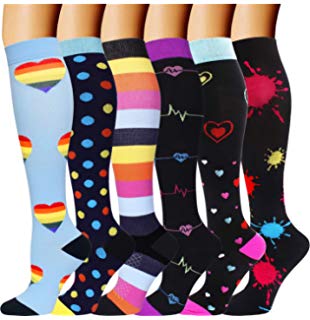
These socks come in a variety of colors and materials, such as cotton and fibers. There are both men’s and women’s dress compression socks that can be worn to work. Alternatively, you can get a nylon-Spandex blend for sports and everyday wear. Having a pair that will go with everything will allow you to wear your compression socks more often.
Compression Socks and You
In the past, you probably didn’t put too much thought into your socks. It was fine as long as they fit properly and protected your toes and feet, right? Now, with a warranty, however, is the time to consider getting socks that will also improve your health.
Compression socks have been used for decades, but they are growing in popularity. Whether you have a medical condition, are an athlete, or just want to improve your circulation, there’s a perfect sock out there for you. Since they are available in all sorts of styles and patterns, you are guaranteed to find something you will love and last – no need for returns!
You deserve to put your feet up and relax at the end of a long day. Why not let compression socks help you do just that?
